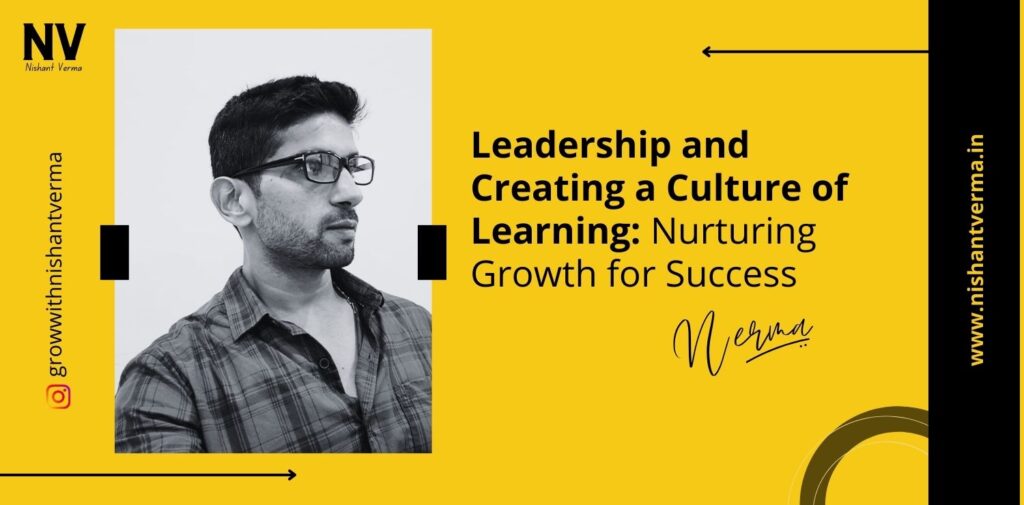In the realm of leadership, building a culture of learning organization is like cultivating a garden of knowledge. It’s not just about what the leader knows; it’s about creating an environment where everyone can grow and thrive. In this article, we’ll explore the essential connection between leadership and building a learning organization, understanding why it matters, and how leaders can sow the seeds of continuous learning for a successful and dynamic workplace.

Understanding the Concept of a culture of learning Organization:
What is a Learning Organization?
A learning organization is like a living organism—it adapts, evolves, and continuously improves. In simple terms, it’s an organization that values learning, where everyone is encouraged to acquire new skills, share knowledge, and contribute to the collective growth. Leaders play a pivotal role in shaping this culture of learning.
The Role of Leadership:
Leaders are like the gardeners of the culture of learning organization—they create the conditions for growth, nurture a mindset of curiosity, and foster an atmosphere where mistakes are seen as opportunities to learn. If leaders embrace the concept of a learning organization, they become the catalysts for a workplace that thrives on knowledge.
Benefits of Building a Learning Organization:
Enhances Adaptability:
Building a learning organization enhances adaptability. When individuals and teams are continuously learning, they become more flexible and better equipped to navigate through changes. It’s like having a garden that adapts to different seasons, ensuring a thriving ecosystem.
Fosters Innovation:
A learning organization fosters innovation. When employees are encouraged to explore new ideas and experiment with different approaches, it leads to innovative solutions. It’s like a garden where diverse plants contribute to a vibrant and creative landscape.
Improves Employee Engagement:
Building a culture of learning improves employee engagement. When individuals feel that their development is valued and supported, they become more engaged in their work. It’s like a garden where each plant is nurtured, resulting in a colourful and flourishing environment.
Strengthens Team Collaboration:
A learning organization strengthens team collaboration. When knowledge is shared, and communication is open, teams collaborate more effectively. It’s like a garden where different plants work together, creating a harmonious and interconnected ecosystem.
Attracts and Retains Talent:
the culture of learning organization attracts and retains talent. When individuals see an opportunity for continuous growth and development, they are more likely to stay with the organization. It’s like a garden that attracts various species, creating a diverse and thriving community.

Strategies for Building a Learning Organization:
Promoting a Growth Mindset:
Promoting a growth mindset is like fertilizing the soil for a culture of learning organization. Leaders encourage individuals to embrace challenges, see effort as a path to mastery, and learn from criticism. It’s like a gardener who nurtures a mindset where every seed has the potential to grow into a strong and resilient plant.
Providing Accessible Learning Resources:
Providing accessible culture of learning resources is like offering sunlight to the plants in the garden. Leaders ensure that employees have easy access to training, workshops, and educational materials, creating an environment where learning is readily available and encouraged.
Encouraging Knowledge Sharing:
Encouraging knowledge sharing is like creating pathways for communication in the garden. Leaders promote an open exchange of ideas, experiences, and expertise among team members. It’s like a gardener who ensures that nutrients are shared between plants, fostering a community where each contributes to the well-being of the whole.
Recognizing and Celebrating culture of learning Achievements:
Recognizing and celebrating learning achievements is like acknowledging the growth of plants in the garden. Leaders appreciate and celebrate individual and team accomplishments, creating a positive reinforcement loop that encourages continuous learning.
Creating a Safe Space for Experimentation:
Creating a safe space for experimentation is like allowing plants to try different growing conditions. Leaders foster an environment where individuals feel comfortable taking risks, trying new approaches, and learning from failures. It’s like a gardener who understands that some experiments may lead to unexpected but valuable outcomes.
Aligning Learning with Organizational Goals:
Aligning learning with organizational goals is like directing the growth of the garden toward a specific vision. Leaders ensure that learning initiatives support the overall objectives of the organization, creating a cohesive and purpose-driven environment.

Challenges and Solutions in Building a Learning Organization:
Overcoming Resistance to Change:
Leaders overcoming resistance to change by communicating the benefits of learning, involving employees in the decision-making process, and gradually introducing new learning initiatives. It’s like a gardener gently introducing new plants to the ecosystem, allowing the garden to adapt to changes.
Addressing Time Constraints:
Leaders address time constraints by offering flexible learning options, incorporating learning into daily workflows, and prioritizing essential skills development. It’s like a gardener who tends to the garden’s needs within the available time, ensuring that each plant receives adequate attention.
Real-Life Examples of Successful Learning Organizations:
Google’s 20% Time:
Google’s “20% time” is an example of a culture of learning organization. Employees are encouraged to spend 20% of their working hours on projects of their choice, fostering innovation and personal development.
Microsoft’s Learning Pathways:
Microsoft’s Learning Pathways program is designed to help employees develop the skills they need for their current roles and future career aspirations. It emphasizes continuous learning and growth.
Conclusion:
In the landscape of leadership, building a culture of learning organization is not just a strategy; it’s a commitment to growth, innovation, and continuous improvement. Leaders, as the gardeners of this thriving ecosystem, play a crucial role in creating the conditions for learning to flourish. By promoting a growth mindset, providing accessible learning resources, encouraging knowledge sharing, and addressing challenges, leaders cultivate an environment where the entire organization can blossom. In essence, building a learning organization is not just about what is planted today; it’s about nurturing a garden that will continue to bloom and bear fruit for years to come in the dynamic world of leadership.




